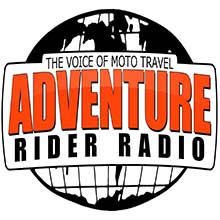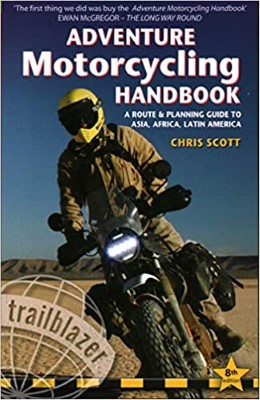
 2Likes 2Likes
 |
|

13 Jan 2012
|
 |
-
Veteran HUBBer
|
|
Join Date: Apr 2006
Location: WWW
Posts: 2,341
|
|
The activated charcoal tap/filter I use on my Lifesaver Jerrycan is good for max 500 litres. (the water filter is good for 20,000 litres or 20 tons of water) It is my understanding that the charcoal filter tap (optional extra) is designed to remove chemical contamination. As it is built into the tap (aka clean water end) there are no bugs to speak of.
Highly recommended- Jerrycan tech specs here
|

13 Jan 2012
|
|
Registered Users
HUBB regular
|
|
Join Date: Oct 2011
Location: Germany (near Hamburg)
Posts: 67
|
|
Quote:
Originally Posted by grizzly7

A course I did covering a variety of stuff including filters suggested a steripen kind of disables any bugs, to the extent that hopefully they won't still do you any harm. However dead they may or may not be, they're still in what you're drinking!
PreMac filters use iodene, but then the carbon bit takes it out again.
The filter on the Lifesaver bottle has small enough holes to not allow any bugs through at all, and I believe there is a cleaning process to flush it within the filters lifespan? If there is nothing left after these holes, what is there to grow on the carbon bit? I'd not heard that before? Is that specific to a Lifesaver or generally?
 |
Activated Charcoal is a well known medium in which bacteria can breed. This problem would not be specific to the Lifesaver UF4000 filter, but to any filter containing activated charcoal for the removal of certain chemicals, flavours, etc.
The Lifesaver does indeed have a very small pore diameter so claims to remove virtually all bacteria and I think also viruses. But no simple membrane filter can remove DISSOLVED chemicals. Some, but certainly not all, dissolved chemicals can be removed by passing through a charcoal/activated carbon filter. The charcoal filters for the Lifesaver UF4000 filter are not overly expensive. However, the main filter costs more than the price, at which the complete filter is commonly available new on eBay and the like.
You can of course sterilise the main filter with Milton or perhaps hydrogen peroxide and because the main filter is hydrophilic (water loving), don't let it dry out when not in use.
Grey Beard
|

13 Jan 2012
|
 |
-
Veteran HUBBer
|
|
Join Date: Apr 2006
Location: WWW
Posts: 2,341
|
|

The Lifesaver system works on membrane technology. To avoid confusion:
I have previously spoken with their tech. chaps and was told categorically to NEVER to use any chemicals on their filters whatsoever as these would irreparably damage the filter and would cause it to malfunction/fail.
(  I shudder to think what hydrogen peroxide would do to it Grey Beard...)
Without wishing to be a  and for the sake of anyone using one of those / good health and safe practice (as far as the jerrycan is concerned- I do not have their Lifesaver bottle)- here is how to clean it:
They described the cleaning of the jerrycan like this:
If you have been using really dirty sources and/or want to clean the jerrycan:
Remove the lifesaver filter and rinse it outwardly in known/clean treated water and put aside carefully as not to damage it.
Remove the pump - clean and re-lubricate and put aside
ONLY when the filter and pump are both out of the jerrycan can you then flush out the jerrycan / wash / rinse/ use whatever chemicals you want to clean the inside but making sure ALL the chemicals are FULLY rinsed out so that none remain in the jerrycan before refitting the old filter or fitting a new one and the pump.
They said it would be good practice to pump through a few litres and discard these after the refit.
The filter continues its job until it begins to fail - When that happens, the filter is designed to shut itself down preventing further use.
Their suggestion (to ensure the filter's longest life possible) was to always source the cleanest water possible and minimise debris entering the jerrycan.
I use a normal orange plastic funnel filter (from Halfords) with muslin cloth to remove as many physical bits as possible.
The combined charcoal tap/filter is an optional extra.
Extract from the Lifesaver website:
LIFESAVER bottle also comes with an activated carbon filter. This is made of high specification activated carbon block which reduces a broad spectrum of chemical residues including pesticides, endocrine disrupting compounds, medical residues and heavy metals such as lead and copper. It also eliminates bad tastes and odours from contaminates such as chlorine and sulphur.
|

14 Jan 2012
|
|
Super Moderator
Veteran HUBBer
|
|
Join Date: Jul 2007
Location: Bellingham, WA, USA
Posts: 3,903
|
|
|
Does that mean you can't sterilize and/or purify water which contains chemicals? Which chemicals, exactly?
I ask because many water sources contain chemicals, including my own municipal water supply here in the USA, from which I drink without fear. Chemicals are added to kill pathogens. Chemicals are present naturally.
And: if no chemicals are permitted in the upstream end of the system, what's the point of having a downstream charcoal filter designed to remove chemicals? Surely there's something missing from the explanation.
Mark
|

14 Jan 2012
|
 |
-
Veteran HUBBer
|
|
Join Date: Apr 2006
Location: WWW
Posts: 2,341
|
|
Mark- you are obviously very interested in this subject-(as I was!) I would suggest you contact the manufacturer of the device you have selected to ask any specific questions. I asked other questions by calling the London School of Hygiene & Tropical Medicines. There must be an equivalent in the USA.
The membrane in the filter is designed to prevent bacteria and viruses passing to the clean end- It does not remove heavy metals etc. Once the clean water is on the clean side then it can go through (if fitted) the tap with the charcoal activated filter.
It would be pointless to have a charcoal filter at the dirty water end as the bugs would seriously stack up in there!
The charcoal cannot remove all chemicals that are in water found in nature but reduces them inc. any nasty tastes that linger.
Tech info: I was told that the smallest bacteria (Tuberculosis) measures about 200nm's and the smallest virus known to man (Polio) is about 25nm's. The Lifesaver membrane pores are 15nm's and therein is lies the secret to its effectiveness.
- The chemicals I was referring to were household cleaning chemicals. I was worried at reading Grey beard's post RE:You can of course sterilise the main filter with Milton or perhaps hydrogen peroxide" after being specifically being told by Lifesaver never to clean the filter with anything but clean water and felt a little clarification might help avoid confusion or risk destroying a £149.50+VAT filter! not to mention the health risk too.
- Lifesaver recommend the use of the charcoal filter if water is taken from sources close to where there is heavy industry and/or bad tasting water.
- The 'best practice rule' is that (whatever filter you have) anyone should always seek out the cleanest water source available at the time.
Nothing is ever 100% perfection and I've settled for 99% effectiveness! and as I needed volume, I chose Lifesaver the jerrycan.
Clean water is important to me, I trust this filter and it works for me.
Ultimately, if you still have any doubts after any water filtering / treatment, there is always the rolling boil method.
Last edited by Bertrand; 14 Jan 2012 at 12:03.
|

14 Jan 2012
|
|
Registered Users
HUBB regular
|
|
Join Date: Oct 2011
Location: Germany (near Hamburg)
Posts: 67
|
|
Quote:
Originally Posted by Bertrand

The Lifesaver system works on membrane technology. To avoid confusion:
I have previously spoken with their tech. chaps and was told categorically to NEVER to use any chemicals on their filters whatsoever as these would irreparably damage the filter and would cause it to malfunction/fail.
(  I shudder to think what hydrogen peroxide would do to it Grey Beard...)
Without wishing to be a  and for the sake of anyone using one of those / good health and safe practice (as far as the jerrycan is concerned- I do not have their Lifesaver bottle)- here is how to clean it:
They described the cleaning of the jerrycan like this:
If you have been using really dirty sources and/or want to clean the jerrycan:
Remove the lifesaver filter and rinse it outwardly in known/clean treated water and put aside carefully as not to damage it.
Remove the pump - clean and re-lubricate and put aside
ONLY when the filter and pump are both out of the jerrycan can you then flush out the jerrycan / wash / rinse/ use whatever chemicals you want to clean the inside but making sure ALL the chemicals are FULLY rinsed out so that none remain in the jerrycan before refitting the old filter or fitting a new one and the pump.
They said it would be good practice to pump through a few litres and discard these after the refit.
The filter continues its job until it begins to fail - When that happens, the filter is designed to shut itself down preventing further use.
Their suggestion (to ensure the filter's longest life possible) was to always source the cleanest water possible and minimise debris entering the jerrycan.
I use a normal orange plastic funnel filter (from Halfords) with muslin cloth to remove as many physical bits as possible.
The combined charcoal tap/filter is an optional extra.
Extract from the Lifesaver website:
LIFESAVER bottle also comes with an activated carbon filter. This is made of high specification activated carbon block which reduces a broad spectrum of chemical residues including pesticides, endocrine disrupting compounds, medical residues and heavy metals such as lead and copper. It also eliminates bad tastes and odours from contaminates such as chlorine and sulphur. |
Hi Bertrand
I already discussed the Lifesaver Filter with their tech support people and I was told that you should sterilise the filter. Hydrogen Peroxide was OK also, but I wouldn't suggest using 30% peroxide, but perhaps the normal 3 or 6% peroxide. Milton is the standard in the UK, but I don't know the equivalent in Germany. I use 3% hydrogen peroxide to sterilise my soft contact lenses daily.
You have to be careful with any filter and the biggest problem is keeping them sterile.
I will have a look later and see if I can find any references to it on the Internet or in the instructions, but I am very surprised that they told you not to use chemicals to clean the filter, unless you were asking about sulphuric acid, strong bleach or caustic soda, etc.
Grey Beard
|

14 Jan 2012
|
 |
-
Veteran HUBBer
|
|
Join Date: Apr 2006
Location: WWW
Posts: 2,341
|
|
|
For the sake of clarity, I will telephone them again next Monday.
|

14 Jan 2012
|
|
Gold Member
Veteran HUBBer
|
|
Join Date: Apr 2008
Location: UK
Posts: 381
|
|
Quote:
Originally Posted by Grey Beard

You have to be careful with any filter and the biggest problem is keeping them sterile.
Grey Beard
|
Hiya
I really don't get this during regular use at least? One side is clean the other side isn't. If no bugs pass through the medium what is there to grow on the clean side? So why does it need cleaning other than (dirty side only) to maintain through-flow efficiency?
Milton at 1 tablet to 4.5l to sterilise screws up many bottles and tanks if not made of a suitable plastic, maybe metals too. Milton used to maintain water quality at 1 tablet per 100 litres at their recommendation has been fine in our campers plastic tank for long term use. Same I'd imagine just using household bleach, the concentration many organisations quote for adding to maintain drinking water will be a long way from the strength that gets squirted under the loo rim!

|

15 Jan 2012
|
|
Registered Users
HUBB regular
|
|
Join Date: Oct 2011
Location: Germany (near Hamburg)
Posts: 67
|
|
Quote:
Originally Posted by grizzly7

Hiya
I really don't get this during regular use at least? One side is clean the other side isn't. If no bugs pass through the medium what is there to grow on the clean side? So why does it need cleaning other than (dirty side only) to maintain through-flow efficiency?
Milton at 1 tablet to 4.5l to sterilise screws up many bottles and tanks if not made of a suitable plastic, maybe metals too. Milton used to maintain water quality at 1 tablet per 100 litres at their recommendation has been fine in our campers plastic tank for long term use. Same I'd imagine just using household bleach, the concentration many organisations quote for adding to maintain drinking water will be a long way from the strength that gets squirted under the loo rim!
 |
The problem with the bacteria in the filter is most likely to occur with back contamination from your saliva on the mouthpiece. This is specifically warned about in the operating instructions for my Lifesaver UF4000. Contamination then spreads to the charcoal filter where a bacterial colony can develop and possible then onto the main cartridge filter.
The operating instructions specifically state you should sterilise the complete filter with a mild sterilising solution like 3ml Milton added to 1.0 litre of clean tap water (or equivalent sterilising solution) and soak for one hour, then invert for a further one hour. Drain and flush with clean water.
Obviously this applies to the Lifesaver UF4000 and you will have to refer to the specific operating instructions for other makes/types of filter.
Grey Beard
|

15 Jan 2012
|
|
Registered Users
HUBB regular
|
|
Join Date: Oct 2011
Location: Germany (near Hamburg)
Posts: 67
|
|
Quote:
Originally Posted by Grey Beard

Hi Bertrand
I already discussed the Lifesaver Filter with their tech support people and I was told that you should sterilise the filter. Hydrogen Peroxide was OK also, but I wouldn't suggest using 30% peroxide, but perhaps the normal 3 or 6% peroxide. Milton is the standard in the UK, but I don't know the equivalent in Germany. I use 3% hydrogen peroxide to sterilise my soft contact lenses daily.
You have to be careful with any filter and the biggest problem is keeping them sterile.
I will have a look later and see if I can find any references to it on the Internet or in the instructions, but I am very surprised that they told you not to use chemicals to clean the filter, unless you were asking about sulphuric acid, strong bleach or caustic soda, etc.
Grey Beard
|
See my post #24. Basically the Lifesaver UF4000 operating instructions specifically state you should sterilise the complete filter with 3ml of Milton (or equivalent) sterilising solution in one litre of tap water for two hours.
I think 3% or 6% hydrogen peroxide or chlorine dioxide tablets would also be suitable.
Grey Beard
|

15 Jan 2012
|
|
Registered Users
New on the HUBB
|
|
Join Date: Dec 2008
Location: Sweden
Posts: 16
|
|
The simplest way is to use PET-bottles. Fill it 80% with clear water and put it in sun for 6 ours. And it´s free from all bacteria. We had use it for one year and no stomach problems. see: Solar water disinfection - Wikipedia, the free encyclopedia
|

16 Jan 2012
|
|
Contributing Member
Veteran HUBBer
|
|
Join Date: Jul 2007
Location: Rockhampton, Australia
Posts: 868
|
|
So, I am wondering if anyone has been and done a trip though east and west Europe WITHOUT any filter or sterilisation?
The reason I ask is because I may consider doing so. I completed the whole of the Americas drinking out of the reticulated water supply. From memory, there was only one place I had to resort to plastic bottles, at a Mexican tourist resort, that was because the motel had a sign above the sink saying don't drink the water.
My guess is that it was for the tourists, so there were no comebacks from Montezumas Revenge if it occurred.
I did note that some of the water tasted like crap, but I fixed that with  later on 
I will use common sense on my trip, and once I hit Asia, then maybe I need to be a bit more aware.
I would like to stay away from plastic bottles though, not because of the cost, but the waste and I don't want to add to the plastic garbage pit in the center of the Atlantic.
Cheers
TS
|

16 Jan 2012
|
 |
-
Veteran HUBBer
|
|
Join Date: Apr 2006
Location: WWW
Posts: 2,341
|
|
I telephoned Lifesaver this morning and have asked the question.
I was previously given the wrong information about the Milton fluid
After flushing out the physical debris from jerrycan, it is fine to actually pump a 5ml solution of Milton fluid through the filter - making sure that, once done, fresh water is then pumped through afterwards and prior to storing/using again.
Thanks to Mike at Lifesaver for his advice
Link to PDF Jerrycan cleaning method
 that's cleared that up!
Last edited by Bertrand; 17 Jan 2012 at 15:08.
|

16 Jan 2012
|
 |
Gold Member
Veteran HUBBer
|
|
Join Date: Aug 2006
Location: London, England
Posts: 706
|
|
Quote:
Originally Posted by TravellingStrom

So, I am wondering if anyone has been and done a trip though east and west Europe WITHOUT any filter or sterilisation?
|
Hi there - I don't filter the tap water in Spain, France, Germany, Austria, Italy, Hungary, and in the better hotels in Poland, on the whole in Lithuania, Latvia and Estonia. I also didn't filter the water in St Petersburg, but would in more rural Russia.
The difference, as it was explained to me by a expedition medic, is one of acclimatisation to the bugs in the water. If you fly into a new place many miles from where you normally drink the water you are very likely to get an upset tummy. But if you were to drink the water en-route, then you are less likely to get an upset tummy.
So I make a point of always cleaning my teeth with the local water then drinking a glass in the morning and evening as I go. During the day I generally do buy bottled water, topping up with tap water as I go.
I've not been ill in Europe doing this - but then again 'I've not been sick' is no indication that you won't be. Some people are MUCH more susceptible to this kind of infection than others.
I've never thought about the impact of buying and throwing away all those bottles of water before. I feel quite bad about that now - I may start using my MSR filter thing from now on instead. Better than it sitting in my pannier un-used as it currently does!
m
|

16 Jan 2012
|
|
Registered Users
Veteran HUBBer
|
|
Join Date: Feb 2008
Location: Washington, DC
Posts: 1,377
|
|
|
I don't recommend drinking the tap water in St Petersburg, my understanding is that it is infested with giardia. The water in most other cities that I've been to in Russia are OK, but out in the countryside I stick with bottled water.
|
|
Currently Active Users Viewing This Thread: 1 (0 Registered Users and/or Members and 1 guests)
|
|
|
 Posting Rules
Posting Rules
|
You may not post new threads
You may not post replies
You may not post attachments
You may not edit your posts
HTML code is Off
|
|
|
|

Check the RAW segments; Grant, your HU host is on every month!
Episodes below to listen to while you, err, pretend to do something or other...

2020 Edition of Chris Scott's Adventure Motorcycling Handbook.
"Ultimate global guide for red-blooded bikers planning overseas exploration. Covers choice & preparation of best bike, shipping overseas, baggage design, riding techniques, travel health, visas, documentation, safety and useful addresses." Recommended. (Grant)

Ripcord Rescue Travel Insurance™ combines into a single integrated program the best evacuation and rescue with the premier travel insurance coverages designed for adventurers.
Led by special operations veterans, Stanford Medicine affiliated physicians, paramedics and other travel experts, Ripcord is perfect for adventure seekers, climbers, skiers, sports enthusiasts, hunters, international travelers, humanitarian efforts, expeditions and more.
Ripcord travel protection is now available for ALL nationalities, and travel is covered on motorcycles of all sizes!
What others say about HU...
"This site is the BIBLE for international bike travelers." Greg, Australia
"Thank you! The web site, The travels, The insight, The inspiration, Everything, just thanks." Colin, UK
"My friend and I are planning a trip from Singapore to England... We found (the HU) site invaluable as an aid to planning and have based a lot of our purchases (bikes, riding gear, etc.) on what we have learned from this site." Phil, Australia
"I for one always had an adventurous spirit, but you and Susan lit the fire for my trip and I'll be forever grateful for what you two do to inspire others to just do it." Brent, USA
"Your website is a mecca of valuable information and the (video) series is informative, entertaining, and inspiring!" Jennifer, Canada
"Your worldwide organisation and events are the Go To places to for all serious touring and aspiring touring bikers." Trevor, South Africa
"This is the answer to all my questions." Haydn, Australia
"Keep going the excellent work you are doing for Horizons Unlimited - I love it!" Thomas, Germany
Lots more comments here!

Diaries of a compulsive traveller
by Graham Field
Book, eBook, Audiobook
"A compelling, honest, inspiring and entertaining writing style with a built-in feel-good factor" Get them NOW from the authors' website and Amazon.com, Amazon.ca, Amazon.co.uk.
Back Road Map Books and Backroad GPS Maps for all of Canada - a must have!
New to Horizons Unlimited?
New to motorcycle travelling? New to the HU site? Confused? Too many options? It's really very simple - just 4 easy steps!
Horizons Unlimited was founded in 1997 by Grant and Susan Johnson following their journey around the world on a BMW R80G/S.
 Read more about Grant & Susan's story
Read more about Grant & Susan's story
Membership - help keep us going!
Horizons Unlimited is not a big multi-national company, just two people who love motorcycle travel and have grown what started as a hobby in 1997 into a full time job (usually 8-10 hours per day and 7 days a week) and a labour of love. To keep it going and a roof over our heads, we run events all over the world with the help of volunteers; we sell inspirational and informative DVDs; we have a few selected advertisers; and we make a small amount from memberships.
You don't have to be a Member to come to an HU meeting, access the website, or ask questions on the HUBB. What you get for your membership contribution is our sincere gratitude, good karma and knowing that you're helping to keep the motorcycle travel dream alive. Contributing Members and Gold Members do get additional features on the HUBB. Here's a list of all the Member benefits on the HUBB.
|
|
|

